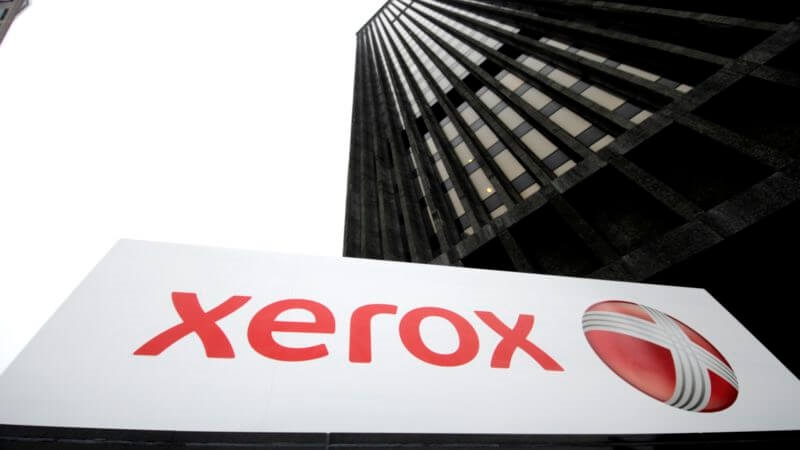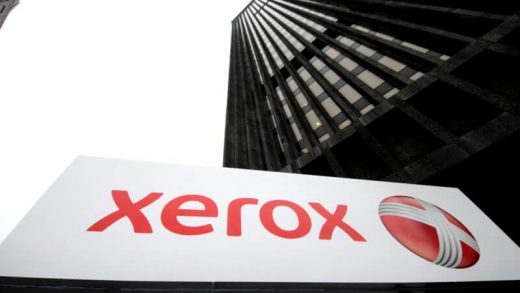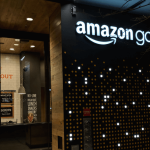To deliver connected experiences, Xerox CMO constantly evaluates brand’s marketing tools
Xerox CMO Toni Clayton-Hine shares how her brand uses martech to connect the dots throughout the customer journey.

After being part of the Xerox team for four years, Toni Clayton-Hine was named CMO in January of this year. In her role leading the brand’s marketing strategy, Clayton-Hine says she aims to build connected experiences across the board for its audience.
“We’re looking to create a connected experience that says we’ll help you communicate, connect and work in a better way — meaning we’re proactively providing you information about managing your environment,” says Clayton-Hine.
To build out and implement this connected experience strategy, her teams are distributed across a variety of functions.
“We have a group of people that focus on global events and sponsorships — we call them experiential marketing,” says Clayton-Hine. “We have people that focus on digital marketing — so everything to do with Xerox.com and all of our owned and earned properties. And then we have a group of people who focus on paid media.”
The CMO says Xerox divides its paid media into brand elements and offering elements. Xerox’s value offerings are focused on initiatives that result in a proposal.
“I want a brand-new fleet of printers. I want a new workflow. I want a managed document services solutions — those that lead to a proposal,” says Clayton-Hine. “And then what we call our volume offers, which are those products that lead to a shopping cart: I want a printer on my desk; I want supplies, etcetera.”
She says Xerox’s marketing group also has a team that focuses on audience, including small and mid-size businesses and enterprise organizations, and then field marketing.
“Field marketing teams are executing those various programs, and the initiatives we’ve put out in the market.”
Today, the CMO gives more background on how it aims to create connected experiences, and the marketing technology stack it’s using to drive the strategy.

Toni Clayton-Hine
CMO @ Xerox
Takeaways:
1. For a connected experience, make sure you have a single point of view and voice — so that the customer’s journey from discovery to purchase feels like a singular experience with the brand.
2. Also, make sure that the experience is connected throughout the post-sale phase as well — ensuring that post-sale touch points, and loyalty, and advocacy are in line with the brand’s mission, vision and values.
3. Always look for the next better way to deliver the experience — what’s the latest and greatest based on the evolving needs of the prospective buyer.
Amy Gesenhues: Because this interview is focused on Xerox’s connected experience strategy, can you define what that means for the brand?
Toni Clayton-Hine: We are helping create solutions that are not just aimed at our buyer, which may be a CIO or CFO, but also connecting that down to the user — the people who are doing invoice processing, or sales, or HR management. They’re actually building out workflows that help them do their jobs better.
That gives you a sense of how we are aiming to connect Xerox as a value proposition, and an entity with our customers. How we do that is broken out by the buyer, the user. Also, how we integrate the sellers — so all of our channel partners that act on our behalf to help sell Xerox.
We also look at a connected experience between the customer and their customers — taking that concept of workflow and saying, how do we put you in a position to be able to be more productive or move faster in different situations?
An example could be in a hospital. We know that patient throughput is very important, so the connected experience is how you take the physical paper, and the digital processes of putting people through the system, and sending paperwork to radiology, and to the insurance company, etcetera — and create that more connected experience for their customer.
How could we help somebody who’s in a marketing organization, or an advertising agency, create a more connected experience for their customers? Through areas of personalization, through the ability to deliver an omnichannel marketing program. We look at it in those respects.
Within the marketing function, specifically in my group, I look for a connected experience by ensuring every touch point we have with a prospective partner, prospective customer or an existing customer, helps give me the insights and data I need to bring them along the buyer’s journey.
Am I providing content to generate awareness around the solutions that Xerox has today? Do we have that information connected to how we are articulating our value, relative to the offers that we sell? How does that connect to somebody in the research phase? How do we serve them information to ensure that we can get them from research to a proposal?
And then, if you are a customer, how do we connect that back so if there’s a cross-sell or upsell opportunity, we are serving them information so that we can accomplish that goal.
AG: How has focusing on connected experiences shaped your marketing strategy?
TCH: As you can imagine, Xerox being a really iconic brand that people are familiar with, when I say Xerox, most people think, “You guys do printing and copying.”
When I talk about Xerox, I talk about it in context of the problems that we solve today. We print — maybe we print on paper — but we also work to integrate both the physical and the digital. We print electronics. We print direct to objects. So how do we solve today’s problems, and how do we articulate that in a relevant way? That’s number one, relevancy.
The second is around connection, interestingly enough. How do we connect those offerings in our value proposition as a brand into the audiences we serve? And the audiences are the sellers, buyers and users. And then, how do we ensure we’re focused on growth?
As a company, we have an amazing portfolio of products. One of our key strategies is to drive revenue growth through connecting those offerings for new business opportunities. When people ask me, so what’s your marketing strategy? I say that we are relevant, that we’re connected, and that we’re focused on growth.
As you can imagine, I can’t deliver on those promises unless I connect the dots along the way — not just from the offering, but again, throughout that buyer’s journey. And then, leveraging technology to do that. So I need to constantly look at what are the different tools and platforms and solutions I’m using internally to be able to deliver on that promise.
AG: In what ways are you using marketing technology to deliver a connected experience?
TCH: We’re constantly looking at how we create, produce and distribute web content in the 160 countries where we do business. How do we create localized flavors within all the privacy laws that change?
We look at using technology with an integrated inbound [and] outbound program. How do we take any inbound contact and feed it into our marketing automation tools? And the move from marketing automation tools into our sales management platform like Salesforce? An attractive example would be how we use Marketo, and we feed Marketo into Salesforce — and that helps us drive and track demand generation activities.
My group also runs e-commerce, so we’re always looking at the demand generation we’re doing relative to e-commerce. How do get information into the e-commerce platform and the shopping cart? And then, what are the technologies we use to ensure we’ve got the highest levels of conversions to sales?
We definitely focus on things like, where are you using the web? Or do we have drop-offs? In terms of making sure we’ve got all of our databases up to speed, what are we leveraging between data cleansing and analytics tools to make sure we’ve got that information into our systems? — that when we’re talking to customers and prospects, we use the lead-routing and mapping to make sure all of our sales channels are not competing with each other, so that I don’t send a lead to a channel partner where I already have Xerox machines in place.
AG: Are there any instances when marketing technology can’t deliver the experience you’re aiming to deliver?
TCH: It really depends on the audience we’re trying to serve. For example, in the graphic communications space, those buyers are very focused on a face-to-face engagement. We do a lot there to bring them into our physical location, our briefing centers, our showroom, because as an audience, they are looking to touch, see, feel the technology that they would buy.
At the same time, they’re really focused on a physical output, so if you are a graphic communications company that sells to restaurants, being able to see the different types of materials you could print your menu on is really important. Or [if] you work with a promotions company, what are the different ways that you could personalize the promotions, and what are the different assets?
So we have a decent amount of marketing activities that are very physical in nature because of the audience we serve.
AG: What are the challenges you face when managing your marketing technology? Do you find that there are things you simply cannot do because the tech doesn’t exist?
TCH: For me, it seems almost an opposite problem, which is there are thousands of tools. The challenge becomes trying to find the right tool to help integrate into an existing environment, which can be difficult. Or if it’s cost-effective for the thing we’re trying to do.
If I say I’m looking at real-time personalization on the website, there’s no shortage of tools that can do that. [T]he vendor selection process can be time-intensive and labor intensive as you’re trying to determine what’s the best solution for the problem we’re trying to solve.
I haven’t necessarily felt like, Gosh I wish there was something that did that. It’s more, we’ve decided we want to solve this problem, and we want to use technology to do that. Now, let’s go through the process of choosing the best option.
Marketing Land – Internet Marketing News, Strategies & Tips
(44)














